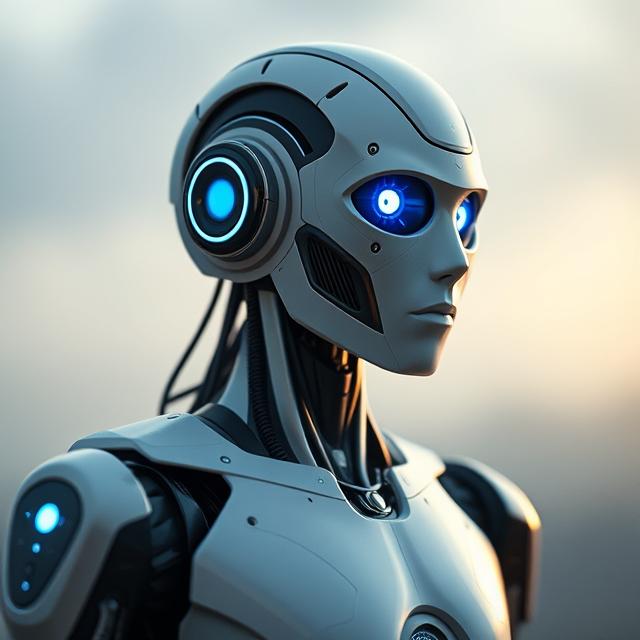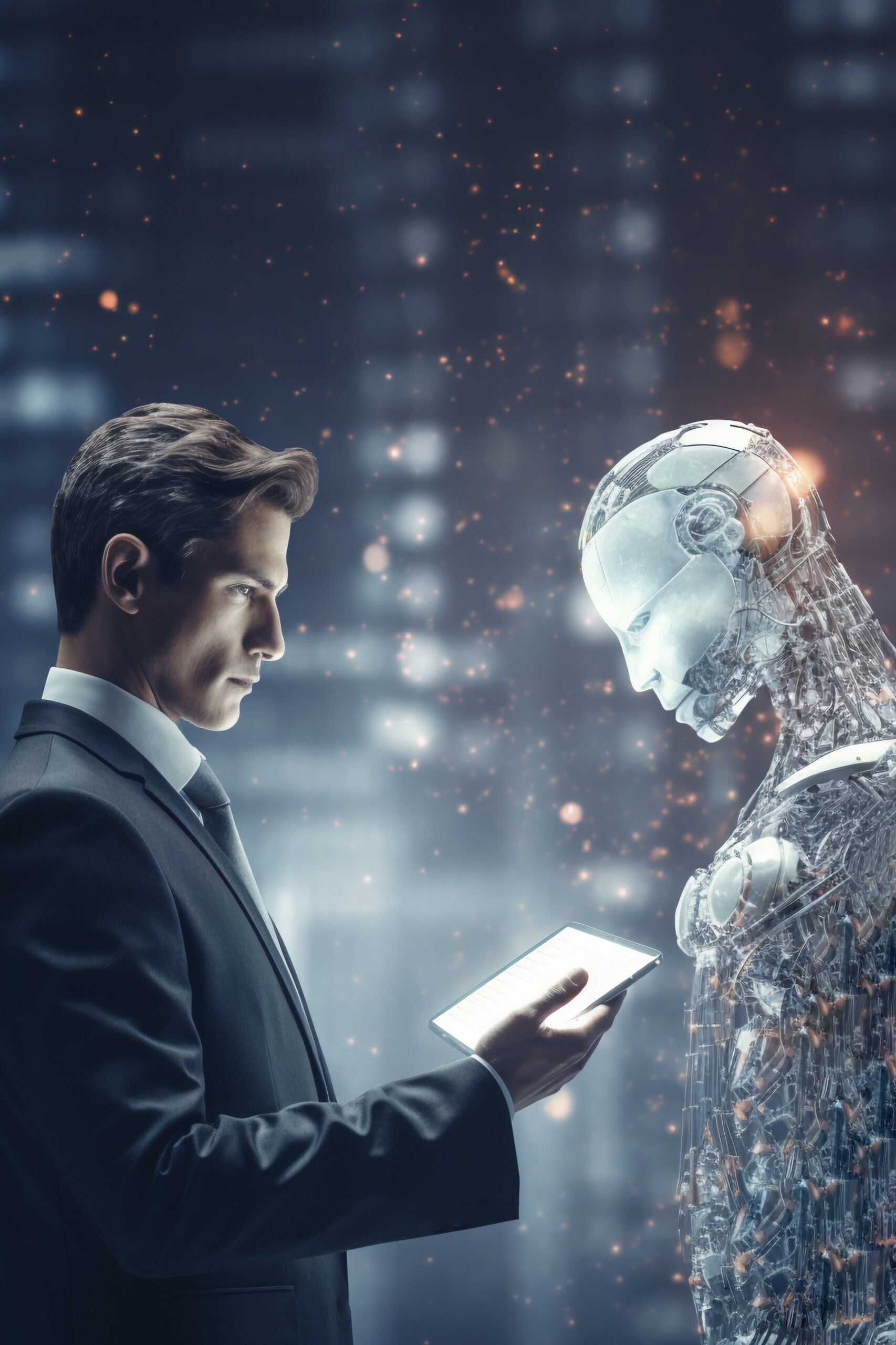On a crisp spring morning in Hanover, Germany, I find myself heading towards an exciting meeting not with a human, but with a machine that might one day reshape our world: a humanoid robot.
I was invited to experience Unitree’s G1 robot at Hannover Messe, one of the world’s largest and most prestigious industrial technology trade fairs. This event brings together the latest innovations from across the globe, setting the stage for new technological breakthroughs and today, the spotlight is on humanoid robotics.
The G1 immediately captures attention. Standing about 4’3″ (130 cm) tall, it is notably smaller and significantly more affordable than many other humanoid robots currently on the market. Yet what it lacks in size, it makes up for in agility and expression. Videos of the G1 fluidly dancing, executing martial arts routines, and performing acrobatics have gone viral, demonstrating an impressive range of motion and dexterity that few competitors can match.
Today, the G1 is being remotely operated by Pedro Zheng, Unitree’s sales manager. Zheng explains that while the G1 can perform complex physical tasks, it requires custom programming by users to operate autonomously. This means customers, often research institutions and tech companies, must invest time into teaching it specific skills.
As the G1 moves gracefully across the exhibition floor, it draws a crowd. Visitors stop, wave, laugh, and even attempt to shake its hand. Unlike the sterile industrial machines surrounding it, the G1’s humanoid shape and uncanny human-like movements trigger a sense of familiarity and curiosity. Even when its movements verge on the “uncanny valley” the eerie feeling triggered when robots appear almost, but not exactly, human people are instinctively drawn to it.
The Humanoid Dream: Opportunities and Challenges
Unitree is just one of dozens of companies worldwide striving to bring humanoid robots from science fiction into everyday reality. The potential is immense. For industries, humanoid robots promise a tireless workforce that doesn’t demand salaries, holidays, or healthcare benefits. In domestic settings, they could become the ultimate household helpers imagine a machine that can do the laundry, wash dishes, or even cook dinner.
However, despite exciting demonstrations, the dream of fully autonomous humanoid robots is still far from reality. Robotic arms and mobile robots have operated successfully in factories and warehouses for decades, where controlled environments reduce unpredictability and enhance worker safety. In contrast, dynamic, unstructured settings like homes, restaurants, or hospitals present a much greater challenge.
For a humanoid robot to be truly useful, it must combine strength, dexterity, and fine motor control. But this very strength can make robots dangerous. A small misstep, or a fall at the wrong moment, could injure people or damage property. Balancing power and safety remains a major obstacle.
Perhaps the biggest hurdle, however, lies in artificial intelligence (AI). As Unitree’s spokesperson told the BBC, “The AI simply has not yet reached a breakthrough moment.” Today’s robot AI struggles with basic logic, reasoning, and common-sense decision-making. Understanding and completing complex, context-dependent tasks logically the kind humans perform intuitively every day is a massive technical leap that still needs to happen.
For now, Unitree’s G1 is mainly marketed toward research institutions and tech developers who can utilize its open-source software to experiment and build new capabilities. Everyday consumers won’t be seeing a G1 cleaning their kitchens anytime soon.
Competition Heats Up: Europe and America’s Strategy
While Chinese companies like Unitree are surging ahead in the humanoid robot race, US and European firms are also vying for a foothold.
One such innovator is Bristol-based entrepreneur Bren Pierce, founder of three robotics companies, including his latest venture, Kinisi. Pierce’s newest robot, the KR1, is designed with practical functionality at its core and a clear-eyed understanding of economic realities.
Although the KR1 was conceptualized and engineered in the UK, manufacturing will take place in Asia. As Pierce explains, it simply makes no sense for European and American firms to import Chinese-made sub-components like motors, batteries, and resistors, only to assemble them halfway around the world at a higher cost. Manufacturing close to the source cuts both time and expenses.
Interestingly, Pierce has deliberately avoided creating a fully humanoid robot. His KR1 is designed for warehouses and factories and doesn’t have legs it moves instead on a wheeled base. “All these places have flat floors,” Pierce notes. “Why would you want the added complexity and cost of legs when a mobile base is much more efficient?”
The philosophy behind Kinisi’s KR1 is to maximize practicality and affordability. Wherever possible, mass-produced, off the shelf parts are used. For instance, its wheels are the same as those used in electric scooters. Motors, batteries, cameras, and computers are all commercially available, helping to keep costs down and simplify repairs and maintenance.
The True Battle: Software, Not Hardware
Like Unitree, Pierce firmly believes that the real “secret sauce” lies not in the hardware but in the software. “A lot of companies produce extremely sophisticated robots, but then you need a PhD in robotics just to set them up,” he explains.
In contrast, the KR1 is being developed with user-friendliness as a priority. The goal is a robot that the average warehouse or factory worker can learn to operate after just a few hours of training. It is being programmed to learn tasks through human guidance repeating an action 20 or 30 times to internalize it.
This strategy reflects a broader trend in robotics: the need to create machines that can work alongside humans safely, intuitively, and efficiently without requiring expert operators.
Pilot programs for the KR1 will begin later this year, allowing select customers to test the robot in real-world environments.
The Future of Humanoids: How Far Are We?
Given the current pace of development, will humanoid robots soon break free from industrial settings and enter our homes? Even optimistic entrepreneurs like Bren Pierce remain cautious.
“My long-term dream for the last 20 years has been building the everything robot,” says Pierce, reflecting on his PhD research. “I do think that is the end goal but it’s a very complicated task. I still think eventually they will be there, but that’s at least 10 to 15 years away.”
Many experts agree. To build a humanoid robot that can operate safely and autonomously in chaotic, human-centered environments, massive advancements are needed in both AI and robotics hardware. Robots will need to understand not just tasks, but context, nuance, and intent things even young children grasp instinctively but machines find extremely difficult.
Moreover, affordability remains a barrier. While companies like Unitree are making progress with relatively low-cost models, mass-market household robots are still prohibitively expensive for most consumers. Bridging that affordability gap will require not just better technology, but entirely new manufacturing and economic models.
A Global Race with High Stakes
Around the world, governments and companies are investing heavily in robotics. Japan, South Korea, the United States, China, and several European nations see robotics including humanoid robots as critical to their future economies. Applications are being explored not only for industry and domestic service but also for elder care, healthcare support, disaster response, and space exploration.
Tesla’s Optimus project, for instance, aims to create general-purpose humanoid robots, with Elon Musk predicting that robots could eventually outnumber humans. Other companies, like Boston Dynamics with its Atlas robot, continue to push the limits of robotic agility and intelligence, although commercialization still seems a long way off.
Meanwhile, startups around the world are experimenting with modular approaches creating specialized humanoid units designed for specific tasks rather than trying to build the ultimate “do-everything” robot from the start.
Conclusion: A Future Still Under Construction
The dream of fully functional humanoid robots living among us is alive and well — but it’s still under construction. Companies like Unitree and Kinisi are making important strides, but the technological, economic, and societal challenges remain formidable.
For now, humanoid robots like G1 and KR1 will continue to develop in controlled environments like factories, warehouses, and research labs. Only time and perhaps some unforeseen breakthroughs will tell when they will finally step beyond those doors and into everyday human life.
But one thing is certain: the race is on, and it’s one of the most exciting, high-stakes competitions of the 21st century.



